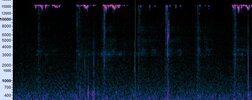Hello,
I am not sure if it’s relatable but I don’t know where to ask so it would be great if anyone can help me.
I recently purchased a remanufactured alternator with new brush and bearing and all for my car. I haven’t installed it but when I turn the pully, there is a really high frequency noise from alternator. The noise is not constant and seems to be louder when I turn it clockwise. Can anyone help me why it’s making a noise like this? And will it be safe to use on my car?
I have filmed the noise. I played it to my dad but he said he can’t hear anything since he can’t hear high frequency noise due to his age but me and my wife can definitely hear it. One of my friend said he thinks it’s brush and commutator noise. Thank you!
I am not sure if it’s relatable but I don’t know where to ask so it would be great if anyone can help me.
I recently purchased a remanufactured alternator with new brush and bearing and all for my car. I haven’t installed it but when I turn the pully, there is a really high frequency noise from alternator. The noise is not constant and seems to be louder when I turn it clockwise. Can anyone help me why it’s making a noise like this? And will it be safe to use on my car?
I have filmed the noise. I played it to my dad but he said he can’t hear anything since he can’t hear high frequency noise due to his age but me and my wife can definitely hear it. One of my friend said he thinks it’s brush and commutator noise. Thank you!


